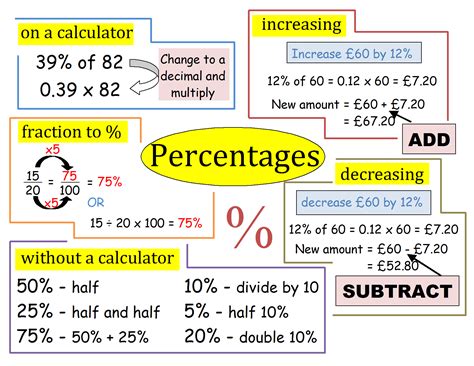What Percentage Is 2 Out Of 6
Kalali
Apr 04, 2025 · 4 min read

Table of Contents
What Percentage is 2 out of 6? A Comprehensive Guide to Percentage Calculations
Understanding percentages is a fundamental skill applicable across numerous areas of life, from calculating discounts and tax rates to analyzing data and understanding statistics. This comprehensive guide will not only answer the question, "What percentage is 2 out of 6?", but will also equip you with the knowledge and tools to calculate percentages confidently in any situation.
Understanding Percentages
A percentage is a fraction or ratio expressed as a number out of 100. The word "percent" literally means "per hundred." Therefore, 25% means 25 out of 100, which can also be written as the fraction 25/100 or the decimal 0.25. Percentages are a useful way to represent proportions and make comparisons easier.
Calculating "What Percentage is 2 out of 6?"
To calculate what percentage 2 out of 6 represents, we can follow these steps:
Step 1: Set up the Fraction
First, we express the given numbers as a fraction: 2/6. This fraction represents the part (2) over the whole (6).
Step 2: Convert the Fraction to a Decimal
To convert the fraction 2/6 to a decimal, we divide the numerator (2) by the denominator (6):
2 ÷ 6 = 0.333...
The result is a repeating decimal, approximately 0.333.
Step 3: Convert the Decimal to a Percentage
To convert the decimal to a percentage, we multiply it by 100 and add the "%" symbol:
0.333... × 100 ≈ 33.33%
Therefore, 2 out of 6 is approximately 33.33%.
Different Methods for Percentage Calculation
While the above method is straightforward, there are other approaches to calculating percentages, particularly useful for more complex scenarios.
Method 2: Using Proportions
We can solve this problem using proportions:
Let x be the percentage we want to find.
We can set up the proportion:
2/6 = x/100
Cross-multiplying, we get:
6x = 200
Dividing both sides by 6:
x = 200/6 ≈ 33.33
Therefore, x ≈ 33.33%
This method is especially useful when dealing with more complex proportions and unknowns.
Method 3: Using a Calculator
Most calculators have a percentage function. Simply enter 2 ÷ 6 and then multiply the result by 100. The calculator will automatically display the percentage. This is a quick and efficient method for everyday calculations.
Practical Applications of Percentage Calculations
Understanding percentage calculations is crucial in various aspects of daily life and professional settings. Here are some examples:
-
Sales and Discounts: Calculating discounts offered in stores. For example, a 20% discount on a $100 item means a savings of $20.
-
Taxes: Determining the amount of sales tax or income tax payable.
-
Finance: Calculating interest rates on loans, investments, and savings accounts.
-
Data Analysis: Representing data as percentages for clearer visualization and interpretation, such as market share or survey results.
-
Statistics: Calculating probabilities and analyzing statistical data. Many statistical measures rely on the understanding and manipulation of percentages.
-
Grades and Scores: Converting numerical scores to percentages to represent academic performance.
Advanced Percentage Calculations
Let's explore some more advanced scenarios involving percentage calculations:
Calculating Percentage Increase or Decrease
This involves finding the percentage change between two values. The formula is:
((New Value - Old Value) / Old Value) x 100%
For example, if a price increases from $50 to $60, the percentage increase is:
((60 - 50) / 50) x 100% = 20%
Calculating a Percentage of a Number
This involves finding a specific percentage of a given number. The formula is:
(Percentage / 100) x Number
For example, to find 15% of 200:
(15/100) x 200 = 30
Finding the Original Value After a Percentage Change
This involves working backward from a percentage change to find the original value. This requires understanding and manipulating the percentage change formula.
For example, if a value is increased by 10% to become 110, the original value was:
110 / 1.10 = 100
Tips and Tricks for Accurate Percentage Calculations
-
Double-check your calculations: Always verify your calculations to avoid errors.
-
Use a calculator when necessary: Don't hesitate to use a calculator for more complex calculations.
-
Understand the context: Always ensure you understand the context of the percentage calculation to interpret the results correctly.
-
Practice regularly: The more you practice percentage calculations, the more confident and proficient you will become.
-
Break down complex problems: If you encounter a complex percentage problem, break it down into smaller, more manageable steps.
Conclusion: Mastering Percentage Calculations
Understanding how to calculate percentages is a versatile skill with numerous applications in daily life and various professions. This guide has provided a thorough explanation of how to calculate "What percentage is 2 out of 6?", along with various methods and practical applications. By mastering these concepts and practicing regularly, you'll confidently tackle any percentage-related challenge you encounter. Remember to utilize the different methods presented to find the approach best suited for your needs and always double-check your work for accuracy. This will ensure you build a solid foundation in percentage calculations, enabling you to analyze data, solve problems, and make informed decisions in numerous contexts.
Latest Posts
Latest Posts
-
500 Milligrams Equals How Many Grams
Apr 05, 2025
-
What Is 50 C In F
Apr 05, 2025
-
80 Is 20 Of What Number
Apr 05, 2025
-
How Many Feet Is 400 Inches
Apr 05, 2025
-
What Is 20 Out Of 30 As A Percentage
Apr 05, 2025
Related Post
Thank you for visiting our website which covers about What Percentage Is 2 Out Of 6 . We hope the information provided has been useful to you. Feel free to contact us if you have any questions or need further assistance. See you next time and don't miss to bookmark.
